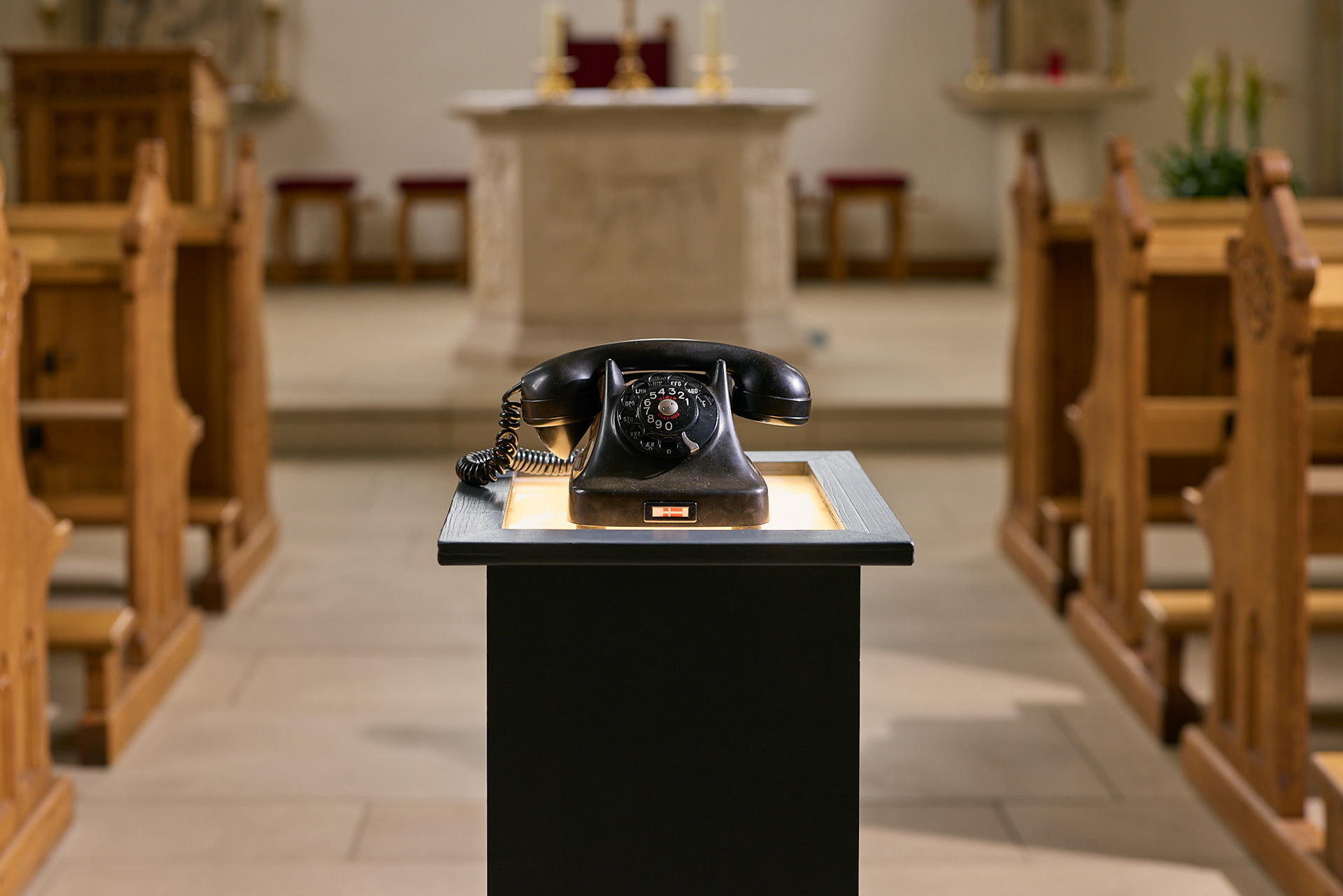CODA
What remains of us when we leave this world? Do we live on in the memories of others? Or in what we achieved during our lifetime? What does a "life after death" sound like? These are the questions explored in a deeply personal way by the musical duo Betonklang (Lukas Schäfer and Luis Weiß) and architect and artist Nathalie Brum. In this work, the sound of the bells from the motorway chapel of St. Antonius in Gescher meets voice recordings made by visitors to the chapel and the Westphalian Bell Museum using a modified telephone - the so-called MEMOphone developed by the artists.
For two weeks, the sound installation turns three elements of the chapel into a resonating sound device: the churchbell tower, the organ galery and the benches. The artists reflect upon the cities church bell manufacturer by replacing the hourly bell sound with a self-composed sound. By this, the public space around the church communicates with the inhabitants. The church benches turn into loudspeaker thanks to transducers, that the artists attached underneath. By this the church itself serves as a loudspeaker. Accompanied by sound from the organ gallery, a multichannel soundscape evolves. The result – the sound installation CODA – casts the motorway chapel of St. Antonius Gescher in a new, musical light as a place of remembrance and spiritual reflection.
Sound Installation for a Highway Chapel
St. Antonius Gescher, September 15 – 27, 2024
St. Antonius Gescher, September 15 – 27, 2024
Foto: Philip Kistner

sound installation betonklang alias Lukas Schäfer und Luis Weiß, Nathalie Brum
Funded by
Glockenstadt Gescher, bonifatius werk, Katholische Kirche Bistum Münster, HEAD-Genuit-Stiftung, Sparkasse Westmünsterland, Katholische Pfarrgemeinde Gescher
all photographs by Philip Kistner